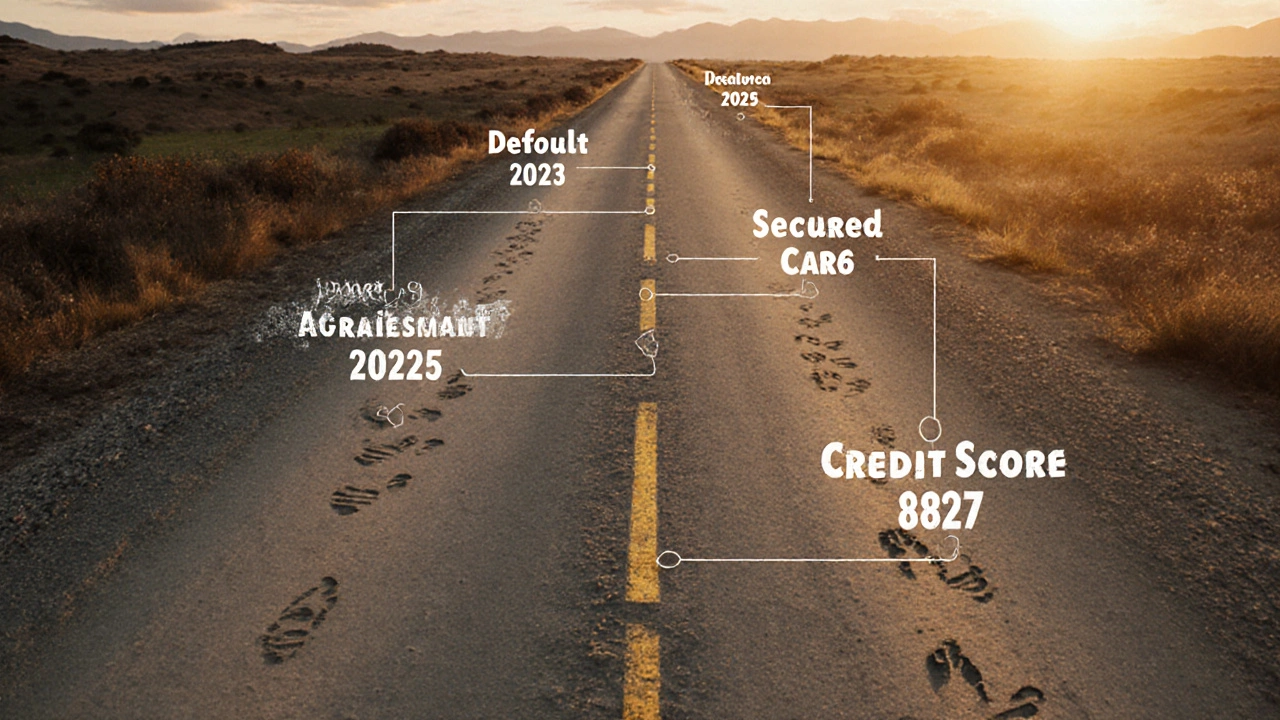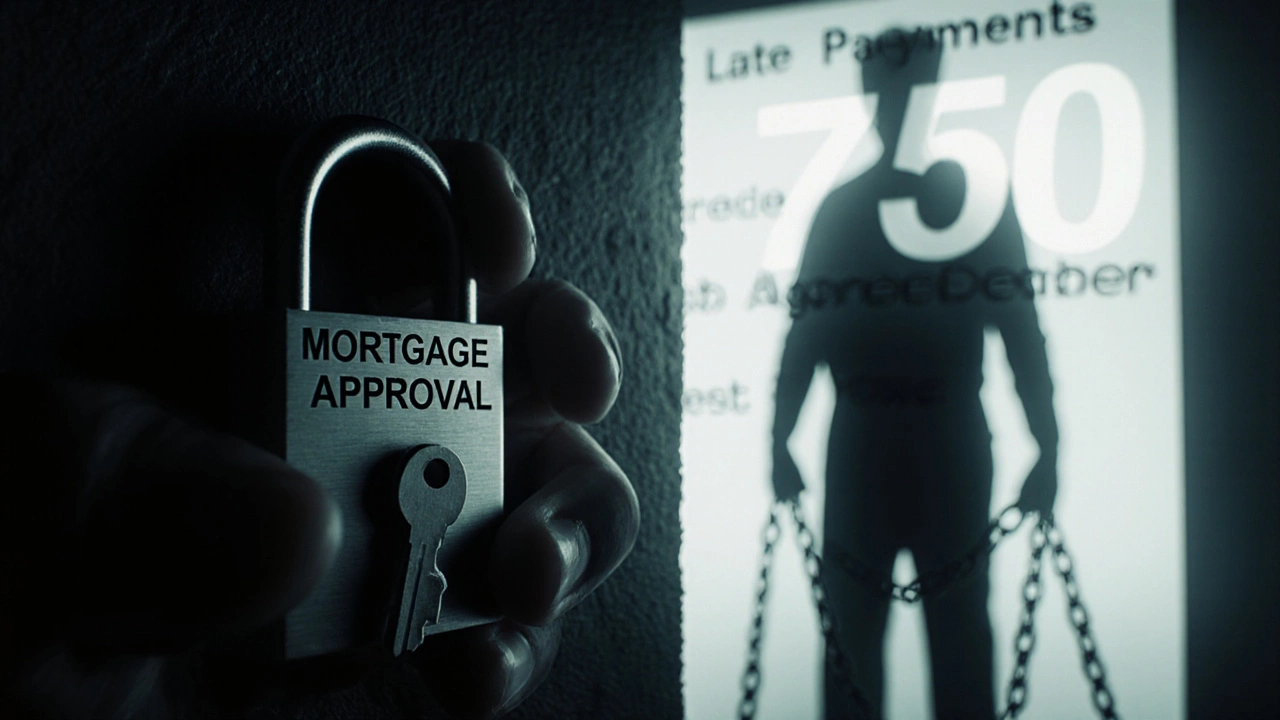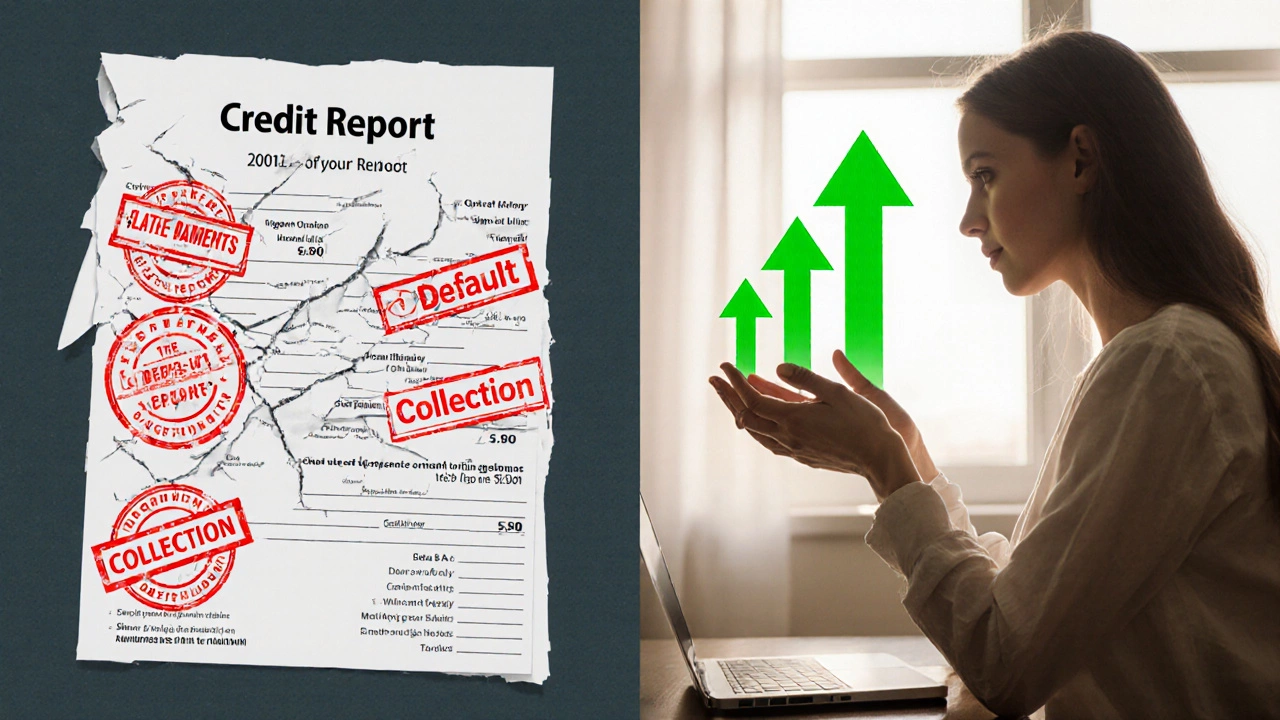Credit History Expiration Calculator
When Will Your Negative Marks Disappear?
Calculate how long negative marks will stay on your credit report after debt consolidation based on when they occurred.
When you consolidate debt, you’re not erasing your past mistakes-you’re rearranging them. Many people think debt consolidation wipes the slate clean, like hitting reset on their credit history. It doesn’t. Your credit report still remembers every late payment, every default, every collection account that led you to consolidation in the first place. The real question isn’t whether debt consolidation fixes your credit-it’s how long the damage sticks around, and what you can actually do to start rebuilding.
Debt consolidation doesn’t erase your credit history
Debt consolidation means combining multiple debts into one loan or payment plan. You might use a personal loan, a balance transfer credit card, or a government-backed debt agreement like a Part 9 Debt Agreement in New Zealand. But no matter the method, the original accounts don’t disappear from your credit file. They stay. And they carry their history with them.
If you had three credit cards with missed payments over 12 months, those late marks stay on your report for five years from the date they occurred. Even if you pay off those cards through consolidation, the late payments don’t vanish. The accounts might show as "paid" or "settled," but the negative history remains. Credit scoring models like VantageScore and FICO don’t care that you’re now paying on time-they care about what you did before.
How long negative marks last on your credit report
In New Zealand, credit reporting agencies like Equifax and illion follow strict timelines for how long negative information stays visible:
- Default listings: 5 years from the date of default
- Collection notices: 5 years from the date issued
- Part 9 Debt Agreements: 5 years from the date you enter the agreement, or until it’s completed (whichever is longer)
- Bankruptcy: 5 years from discharge, or up to 7 years if you’ve been bankrupt before
- Missed payments: 2 years from the date they occurred
Here’s the key: even if your debt consolidation ends your payments to creditors, the negative history from before consolidation stays on your report for years. If you defaulted on a credit card in March 2023 and entered a debt agreement in June 2025, that default will still show until March 2028.
What debt consolidation does to your credit score
Your credit score takes an immediate hit when you consolidate, but not because of the consolidation itself. It’s because of what happens during the process:
- Hard inquiries: Each time a lender checks your credit to approve a consolidation loan, your score drops 5-10 points. Multiple applications in a short time stack up.
- High credit utilization: If you close old credit card accounts after transferring balances, your overall credit utilization ratio spikes. Even if you pay off the cards, closing them reduces your total available credit, making your debt look bigger in proportion.
- Account status changes: When your old accounts are paid off through consolidation, they may be marked as "closed by creditor" or "settled," which lenders interpret as riskier than "paid as agreed."
Most people see their credit score drop 20-50 points right after consolidation. That’s normal. But here’s the part most people miss: your score doesn’t stay down forever. It starts climbing as soon as you make consistent, on-time payments on your new loan.

How to rebuild credit after debt consolidation
Rebuilding isn’t about waiting for time to pass-it’s about what you do while you wait. Here’s how to turn the next 12-24 months into a credit recovery plan:
- Never miss a payment. Your new consolidation loan becomes your most important financial obligation. Set up direct debit. Miss one payment, and your score drops again.
- Keep old accounts open. If you paid off credit cards through consolidation, don’t close them. Keep them active with small, paid-off balances. This helps your credit utilization ratio stay low.
- Use a secured credit card. If you can’t qualify for a regular card, get a secured one. Deposit $200-$500, get a $200-$500 limit, and spend $10-$20 a month. Pay it off in full. This rebuilds your payment history without risk.
- Check your credit report every 3 months. Errors happen. A closed account might still show as unpaid. A default might be listed twice. Dispute anything wrong. In New Zealand, you can get free reports from Equifax and illion.
- Avoid new debt. Don’t apply for another loan, credit card, or buy anything on finance until your score improves. Each new application adds risk in the eyes of lenders.
People who follow these steps usually see their score improve by 50-100 points within 12-18 months. It’s not magic. It’s consistency.
Debt agreements vs. loans: which hurts your credit longer?
Not all debt consolidation is the same. The method you choose changes how long the damage lasts.
| Method | Impact on Credit Report | Duration on Report | Best For |
|---|---|---|---|
| Personal Loan | Old accounts marked as paid; hard inquiry | 2-5 years (depends on prior defaults) | Those with decent credit who can qualify for low interest |
| Balance Transfer Card | Old cards show zero balance; new card opens | 2-5 years (depends on prior late payments) | People who can pay off balance within 0% intro period |
| Part 9 Debt Agreement | Listing on credit file; accounts marked as "settled" | 5 years from start date (even if paid early) | Those with severe debt and no income surplus |
| Debt Management Plan (through non-profit) | Accounts marked as "in DMP"; no negative mark if payments made | Up to 7 years (if payments are late) | Those who want to avoid formal agreements |
If you’re eligible for a personal loan, it’s usually the least damaging option. A Part 9 Debt Agreement will stay on your report for five full years, no matter how fast you pay it off. That’s a long time to be flagged as a high-risk borrower.
Can you get a loan or mortgage after debt consolidation?
Yes-but not right away. Most lenders in New Zealand won’t approve a home loan if you’ve had a Part 9 Debt Agreement in the last 2-3 years. Even with a personal loan, you’ll need:
- At least 12 months of clean payment history
- A credit score above 600 (out of 1200)
- Proof of stable income
- A deposit of at least 10% (some lenders require 20% if you’ve had past defaults)
Specialist lenders exist for people with past credit issues, but they charge higher interest rates. Waiting 18-24 months after consolidation gives you far better options. A 6.5% mortgage rate in 2025 isn’t bad-but a 9.5% rate is a heavy burden.

What happens if you don’t pay your consolidation loan?
Consolidation only works if you stick to it. If you miss payments on your new loan, you’ll face the same consequences as before:
- Default listings added to your credit report
- Additional late payment marks
- Possible legal action or wage garnishment
- Bankruptcy risk
Worse, you’ll be stuck with a new negative mark on top of the old ones. Your credit recovery timeline resets. You’re not fixing your credit-you’re making it worse.
Real example: Sarah’s journey
Sarah had $28,000 in credit card debt across three cards. She missed payments for 8 months. Her credit score dropped to 412. In March 2024, she entered a Part 9 Debt Agreement and paid $450/month for 3 years. Her old accounts were closed and marked as settled. Her score stayed below 500 for the first 18 months.
But she didn’t stop there. She opened a secured credit card, used it for groceries, and paid it off every month. She checked her report every quarter and disputed two errors. By June 2025, her score hit 685. In August 2025, she applied for a home loan. She got approved with a 6.1% rate-because she had 15 months of clean payments and no new debt.
Her debt agreement stayed on her report until March 2029. But by then, her score was 750. The agreement was just a footnote.
Bottom line: Time + action = recovery
Debt consolidation doesn’t fix your credit. It gives you a fresh start on payments, not a clean slate on your history. The bad marks will stay for 2 to 5 years, depending on what happened before. But your credit score isn’t locked in. It responds to your behavior right now.
If you make on-time payments, keep old accounts open, avoid new debt, and check your report regularly, you can rebuild strong credit in 18-24 months-even after a Part 9 Debt Agreement. The clock starts ticking the day you make your first payment on your consolidation plan. Don’t wait for time to heal you. Act.
Does debt consolidation remove negative marks from my credit report?
No. Debt consolidation doesn’t remove late payments, defaults, or collections from your credit report. Those stay for 2 to 5 years based on when they occurred. Consolidation changes how you pay your debts, not what’s already been recorded.
How long does a Part 9 Debt Agreement stay on my credit file?
A Part 9 Debt Agreement stays on your credit report for five years from the date you enter the agreement-even if you pay it off early. It will show as an active listing until it’s completed, and then remain as a historical entry for the full five years.
Can I get a credit card after debt consolidation?
Yes, but you may need to start with a secured credit card. Lenders will look at your payment history on your consolidation loan. If you’ve made 12+ on-time payments and your credit score is above 600, you can qualify for unsecured cards. Avoid applying for multiple cards at once-each application lowers your score.
Will closing old accounts after consolidation hurt my credit?
Yes. Closing old accounts reduces your total available credit, which can raise your credit utilization ratio. Even if you paid them off, keeping them open with zero balances helps your score. Only close accounts if they charge annual fees you can’t justify.
How long until I can buy a house after debt consolidation?
You can qualify for a home loan 18-24 months after consolidation, if you’ve rebuilt your credit. Lenders want to see at least a year of on-time payments, a stable income, and a credit score above 600. A Part 9 Debt Agreement may delay approval for up to 3 years, depending on the lender.

